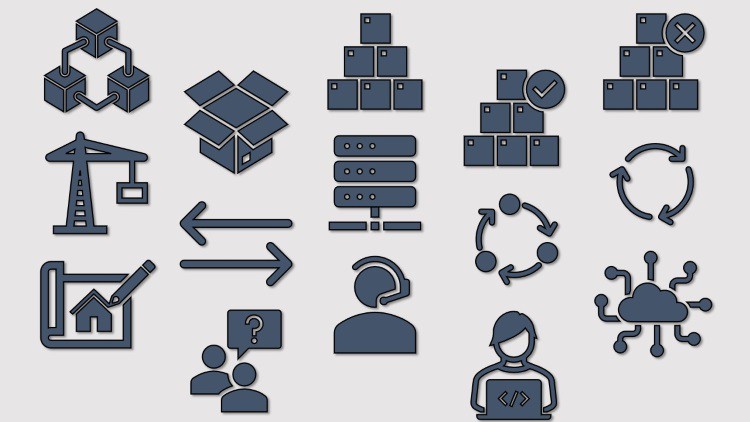
Architecture is an important engineering step in the design and creation of software
What you will learn
Acquaintance with different levels in software architecture
Creation of the constituent parts of the software architecture and the connection between them
Building the best software architectures
Creation of an understandable description of the software architecture for further expansion
Add-On Information:
Note➛ Make sure your 𝐔𝐝𝐞𝐦𝐲 cart has only this course you're going to enroll it now, Remove all other courses from the 𝐔𝐝𝐞𝐦𝐲 cart before Enrolling!
- Architectural Thinking & Abstraction: Cultivate a high-level strategic mindset for designing and structuring complex software systems, moving beyond component-level details to grasp the bigger picture.
- Strategic Trade-off Analysis: Master the art of evaluating and balancing conflicting architectural requirements—like performance, security, cost, and time-to-market—to make informed, long-term decisions that align with business objectives.
- Systemic Quality Attribute Design: Learn to explicitly design for crucial quality attributes such as scalability, reliability, maintainability, and testability, embedding them into the architecture from inception rather than as an afterthought.
- Exploring Architectural Paradigms: Dive deep into various architectural styles (e.g., microservices, event-driven, monolithic, client-server) and understand their strengths, weaknesses, appropriate use cases, and how they impact system development and operation.
- Effective Stakeholder Communication: Develop robust methods for clearly articulating complex architectural visions, rationales, and decisions to both technical teams and non-technical business stakeholders, fostering alignment and shared understanding.
- Architectural Evolution & Governance: Understand principles for designing adaptable architectures that can gracefully evolve over time in response to changing requirements, along with strategies for architectural governance and decision-making processes.
- Technical Leadership & Vision: Gain insights into leading development efforts by establishing a clear technical vision, influencing team adoption of architectural standards, and driving best practices across the software development lifecycle.
- Risk Mitigation through Design: Identify and mitigate potential architectural risks early in the design phase, preventing costly refactoring, system failures, and security vulnerabilities down the line.
- Documentation as a Living Asset: Learn to create meaningful, maintainable architectural documentation that serves as a vital knowledge base, capturing design rationale, assumptions, and future directions for current development and future system expansion.
- Contextual Architectural Fit: Develop the ability to select and tailor architectural solutions that perfectly align with specific project constraints, business goals, existing infrastructure, and organizational capabilities.
- PROS of this Course:
- Career Acceleration: Position yourself for pivotal roles in software development, from lead developer to dedicated software architect, by mastering system-level design and strategic technical decision-making.
- Elevated Problem-Solving Skills: Gain a holistic perspective on software systems, enabling you to design more resilient, scalable, and maintainable solutions that effectively address core business and technical challenges.
- Strategic Project Impact: Learn to make high-leverage decisions that significantly influence project success, reduce technical debt, optimize resource utilization, and ensure long-term system viability and organizational growth.
- Enhanced Team Collaboration: Acquire the communication, leadership, and negotiation skills to effectively guide development teams through complex architectural implementations and foster a culture of technical excellence.
- CONS of this Course:
- Abstract Complexity: The course demands a significant capacity for abstract thinking, conceptual modeling, and understanding complex interdependencies, which may present a challenge for those who prefer purely concrete, hands-on coding tasks.
English
language